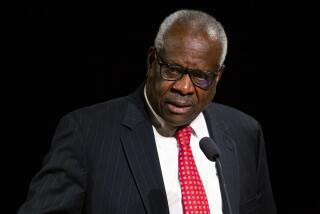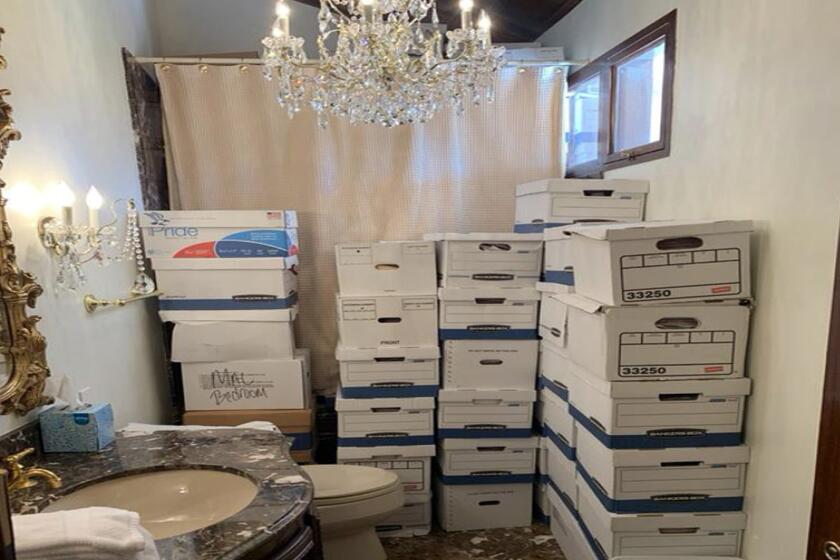‘Invisible’ Finnish Community Still Has One Proud Voice Left
On her way to work each day, Marita Cauthen passes the neighborhood here that for years was known as Finn Town. Her battered Saab (a car, she notes, that once was made in Finland) chugs past the sites of the old Finnish labor halls and comes to rest not far from this city’s last Finnish-style sauna studio.
“Sow-oo-na,” she pronounces it, careful to enunciate each vowel in the true Finnish tradition.
“Other people can pronounce it in the American way,” Cauthen says with a disdainful toss of her head. “I refuse to do that.”
At age 55, Cauthen finds herself one of the most prominent voices in what once was a flourishing center of Finnish immigrants.
More than 20 years ago, she answered an ad for office help at Raivaaja, a weekly Finnish-language newspaper.
Before long, she was the editor -- and by extension, an unofficial guardian of a proud but fading culture.
So many Finns flocked here a century ago for factory jobs that this city in central Massachusetts often called itself “Finnburg.” But when the factories folded, the jobs disappeared. Most of the 40,000 immigrants who at one time made this the largest concentration of Finns outside Finland have long since scattered.
The area’s Finnish population has shrunk to about 5,000. Once there were eight sauna studios; now there is only one -- and it is not owned by a Finn. The Elm Street district known for decades as Finn Town now is home mostly to immigrants from Asia and Latin America.
The raucous summer solstice festival called Midsomar has turned into a sedate chicken barbecue. At Saima Park, a recreation area owned by a Finnish social club, the largest annual event is a gathering of Hmongs, who rent the place from the Finns.
“Twenty-five years ago, you could walk the streets of Fitchburg and hear Finnish being spoken,” says Cauthen, who left her homeland at 20 to work as an au pair in the United States. “Now, you don’t hear Finnish around here any more.”
Looking around her newspaper’s cramped, cluttered office, Cauthen said it gradually fell to Raivaaja to serve as the voice of this “invisible ethnic” community. The paper -- whose name means “Pioneer” or “Trailblazer” -- was founded as a daily in 1905, largely as a mouthpiece for the area’s activist Finnish labor organizations.
“We consider ourselves the forum for dialogue about issues in the Finnish community,” says Cauthen, who publishes the paper with one other full-time employee. Raivaaja’s annual budget of $80,000 comes from subscriptions, advertising, foundation grants and a small contribution from the Finnish government.
The paper says it has 2,000 subscribers. Cauthen says Raivaaja reluctantly raised its annual subscription fee not long ago from $28 to $33.
The paper is printed in the office of a nearby daily newspaper, using a special keyboard that accommodates the 29-letter Finnish alphabet.
Over time, Raivaaja began publishing half its articles in English. Cauthen and her business manager, Jonathan Ratila, scour the Internet for information about Finland.
American newspapers, she notes wryly, often overlook the events in the cold, northern country.
“Usually the news that you find in American newspapers would be the silly news, like wife-carrying contests,” says Cauthen, who grew up skiing to school in Tampere, Finland’s second-largest city.
Ratila, a fourth-generation Finnish American, says the paper’s challenge often is separating “fake lore from folk lore.” With articles about Finnish educational standards, Finnish race-walking and Finnish child-bearing practices, “our publication helps to provide an identity,” Ratila says.
One recent Raivaaja story described a Finnish forensic dentist who helped explore mass graves in Iraq. Another warned of layoffs in Finland’s shipbuilding and automobile manufacturing industries. A Finnish accordion player nicknamed Papu was the subject of a hefty feature.
“As the numbers dissipate, people still are interested in learning about the culture of their parents and grandparents,” says Ratila, who also is assembling a photographic archive of Finnish American history.
As a small boy, Ratila recalled, he saw TV shows about several ethnic groups -- but never about the Finns. He says his parents taught him only a few words of their native tongue, a member of the Finno-Ugric language group. When he discovered Raivaaja, he recalls, “I thought, ‘We have a newspaper!’ ”
Obituaries, along with a calendar listing Finnish festivals, have become the paper’s best-read articles, Cauthen says. The death notices pay equal heed to the life stories of well-known Finns and Finnish Americans who led more modest existences.
“We have a number of readers in their late 80s or 90s, so basically we lose a lot of our subscribers every year,” Cauthen says. “But because of the stories in English, so far we have managed to find replacements from the younger generation.”
Jari Sinkari, a press officer at the Finnish Consul General in New York, says Raivaaja provides an important link.
“It is very interesting and very valuable that they are carrying the message for these American Finns about their roots,” he says. “But you wonder how long they can keep going.”
To help make ends meet, the newspaper office doubles as a small bookstore specializing in Finnish books and CDs. Cauthen calls many of the bookstore’s customers “born-again Finns”: descendants of Finnish immigrants who place new value on their heritage as they grow older.
As if on cue, Joyce and Lloyd Hannula step through the door at Raivaaja to buy a copy of “Kalevala: The Epic of the Finnish People.” Joyce, 58, explains that this is her favorite wedding gift for friends and family. Often, she says she includes a bright blue-and-white banner in the package.
“You never know,” she says playfully, “when you’re going to want to fly a Finnish flag.” More seriously, she adds that she feels a sense of responsibility to pass along her heritage: “We just can’t let it fizzle away completely.”
Surrounded by stacks of old newspapers, Cauthen and Ratila say they feel much the same way. The newspaper, they say, is a vehicle to help preserve Finnish traditions.
“Sometimes it is almost like being a missionary, getting converts,” Ratila says. “They used to call the Finnish laborers here ‘apostles of socialism.’ Well, we’re doing apostle work too.”
More to Read
Start your day right
Sign up for Essential California for news, features and recommendations from the L.A. Times and beyond in your inbox six days a week.
You may occasionally receive promotional content from the Los Angeles Times.






